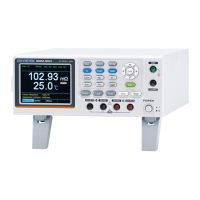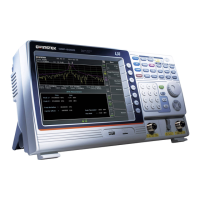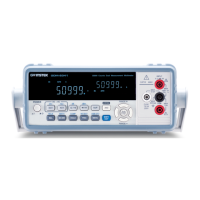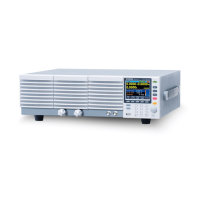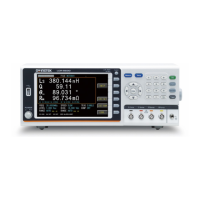A note about Thermoelectric EMF
When making low resistance measurements, thermoelectric electromotive
force (Vemf) can affect measurement accuracy. Vemf is created at the junction
of two dissimilar metals, such as the contact point of a test lead and the pin
of a DUT. Vemf adds a small but measurable voltage to the measurement.
There are primarily two different methods to compensate for Vemf in low
resistance measurements: Offset Compensation and Vemf Cancelling. The
GOM-805 uses Vemf Cancelling with the pulse drive signal setting (see page
33).
The Pulse drive mode supplies a positive and a negative measurement current
source.
This produces a positive and negative measurement voltage across the DUT,
which also includes the Vemf (V1+Vemf & V2+Vemf).
To cancel the Vemf, V2 is deducted from V1 and divided by 2 to get the
average measurement, as shown in the formula below:

